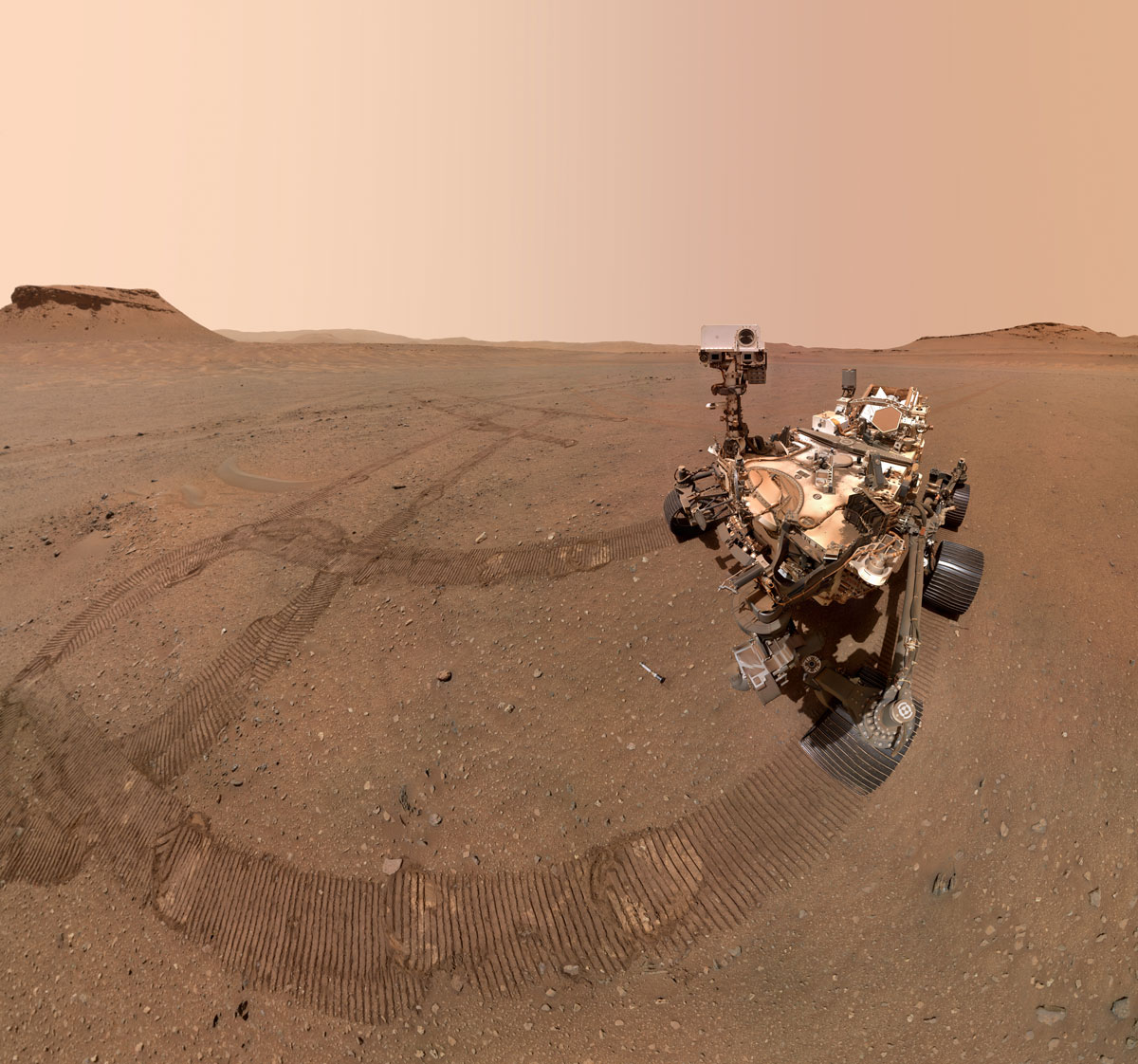Fly over Perseverance rover's Mars stomping grounds in new video
See Jezero Crater in a whole new light.
A spectacular new video takes viewers on a flight through an ancient lakebed on the surface of Mars, revealing details of the fascinating area known as Jezero Crater.
The video pans around the 28-mile-wide (45 kilometers) Jezero, which is currently being explored by NASA's Perseverance rover. Perseverance, which landed in February 2021, is collecting samples for future return to Earth and searching for evidence that Jezero, which once overflowed with water, may have hosted microbial life.
A textured and cratered landscape can be seen in the footage, which was created using data collected by the European Space Agency's (ESA) Mars Express spacecraft and NASA's Mars Reconnaissance Orbiter (MRO).
Related: 12 amazing photos from the Perseverance rover's 1st year on Mars

Jezero is located on the western edge of a flat Mars plain called Isidis Planitia, an area believed to have been created by an asteroid impact. The crater is a so-called "open basin lake," which means that water once flowed both into and out of this now barren and arid crater.
As the video zooms in closer to Jezero, an outflow channel can be seen snaking away from the crater toward the viewer. As the video zooms in even more, two inflow channels, called Neretva Vallis and Sava Vallis, can be resolved on the western-northwestern rim of Jezero.
Breaching the wall of Jezero are three valleys, which are also the remains of rivers that dried out billions of years ago. These inflow channels once fed this ancient lake with water and form the most prominent branches leading into Jezero. They eventually branch out to create a fan-shaped river delta within the crater, a feature that the Perseverance team is keen to explore.
Get the Space.com Newsletter
Breaking space news, the latest updates on rocket launches, skywatching events and more!
Over 3.5 billion years ago, the channels of Jezero spilled water over the crater wall, birthing a lake. Today researchers see traces of clay minerals carried by this water from the surrounding region and into the lake. There is a possibility that, during this waterlogged period, microbial life existed in and around Jezero. If this is the case, the sediments in the lakebed and shoreline of Jezero today could contain traces of this Mars life.
Additionally, the diverse rocks, materials, features and mineralogy found in and around the crater could reveal details of the Red Planet's geological history. Next to Jezero is a system of faults known as Nili Fossae and Syrtis Major, which around 3 billion years ago was a site of intense volcanism.

The new video was created by merging data from Mars Express' High-Resolution Stereo Camera (HRSC) and MRO's Context Camera (CTX). HRSC has been capturing full-color images of the Red Planet since 2003, when Mars Express arrived at the planet. It has mapped over 90% of the Martian surface in its 19 years of operation.
CTX grants context to high-resolution analysis of key spots on Mars, providing a big-picture view of background terrain around smaller rock and mineral targets.
MRO arrived at the Red Planet in 2006, three years after Mars Express did. Its primary mission involves searching for traces of water that may still exist on the surface of the Red Planet, though MRO does a variety of other tasks as well, including relaying communications to and from NASA rovers and landers on the Martian surface.
Follow us on Twitter @Spacedotcom and on Facebook.
Join our Space Forums to keep talking space on the latest missions, night sky and more! And if you have a news tip, correction or comment, let us know at: community@space.com.

Robert Lea is a science journalist in the U.K. whose articles have been published in Physics World, New Scientist, Astronomy Magazine, All About Space, Newsweek and ZME Science. He also writes about science communication for Elsevier and the European Journal of Physics. Rob holds a bachelor of science degree in physics and astronomy from the U.K.’s Open University. Follow him on Twitter @sciencef1rst.









